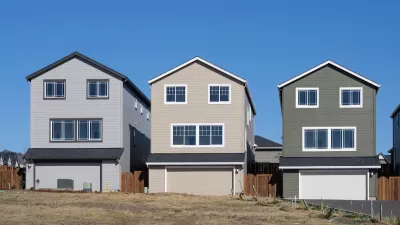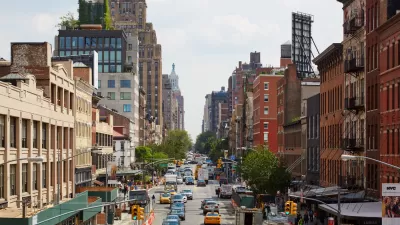A plan to eliminate a tax loophole on more than 10,500 vacant lots across New York City could help contribute to the mayor-elect's affordable housing goals.
Bill de Blasio is seeking to implement an idea he introduced in April: to increase the assessed value of vacant residential properties in order to "force owners either to put it to use and build housing or to sell it to those who will," reports Joe Anuta. "By increasing the cost of inactivity to prohibitive levels, the hope is that more land can be put back into use and much-needed housing can be built."
"It would drive the price of land down and increase development, to the extent the tax increases are significant," predicted Robert Knakal, chairman of Massey Knakal Realty Services. "The more expensive [vacant land becomes to hold], the less of it you will get—that's Economics 101."
"Some observers believe, however, that such a move carries big risks," notes Anuta. "For openers, it could discourage developers from patiently assembling large blocks of property needed for big developments by effectively driving up their property costs. That could, perversely enough, limit new housing production."
FULL STORY: De Blasio tells lot owners to put up or pay up

Alabama: Trump Terminates Settlements for Black Communities Harmed By Raw Sewage
Trump deemed the landmark civil rights agreement “illegal DEI and environmental justice policy.”

Study: Maui’s Plan to Convert Vacation Rentals to Long-Term Housing Could Cause Nearly $1 Billion Economic Loss
The plan would reduce visitor accommodation by 25% resulting in 1,900 jobs lost.

Why Should We Subsidize Public Transportation?
Many public transit agencies face financial stress due to rising costs, declining fare revenue, and declining subsidies. Transit advocates must provide a strong business case for increasing public transit funding.

Paris Bike Boom Leads to Steep Drop in Air Pollution
The French city’s air quality has improved dramatically in the past 20 years, coinciding with a growth in cycling.

Why Housing Costs More to Build in California Than in Texas
Hard costs like labor and materials combined with ‘soft’ costs such as permitting make building in the San Francisco Bay Area almost three times as costly as in Texas cities.

San Diego County Sees a Rise in Urban Coyotes
San Diego County experiences a rise in urban coyotes, as sightings become prevalent throughout its urban neighbourhoods and surrounding areas.
Urban Design for Planners 1: Software Tools
This six-course series explores essential urban design concepts using open source software and equips planners with the tools they need to participate fully in the urban design process.
Planning for Universal Design
Learn the tools for implementing Universal Design in planning regulations.
Smith Gee Studio
Alamo Area Metropolitan Planning Organization
City of Santa Clarita
Institute for Housing and Urban Development Studies (IHS)
City of Grandview
Harvard GSD Executive Education
Toledo-Lucas County Plan Commissions
Salt Lake City
NYU Wagner Graduate School of Public Service





























